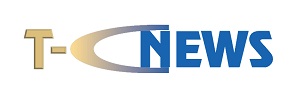After having a former English teacher as my Line Manager many years ago, I developed a pet peeve of people using words without having really considered the meaning. There are two small nouns that I consider to be frequently used erroneously – TRUST and FAITH. Trust is defined as a ‘firm belief in someone or something’ whereas faith is defined as ‘having absolute trust in someone or something’. As the words are both nouns or descriptive words that represent something or someone, to use them, we should be able to provide something tangible that allows someone to trust, or have faith in us. I recently completed a project where the engaging stakeholders trusted me to produce something that was completely new and unfamiliar to them.
As I reflected on the successful delivery, I thought about the key things I did that I believe helped them to make that leap of faith and to trust me to deliver.
- Articulate your proposal
In one of my previous articles, I talked about the way in which I create a ‘master pack’ of slides that I use to create multiple presentations as a project develops. I still do this as I believe the way you depict your plan has a big impact on how people think about it. It is obvious that you’ll need to be able to describe the who, what, when, where, how and why, but how you do this is also critical. If you want people to have faith that you can create and deliver something that is new and exciting, then your proposal should be too. I demonstrated the programme timeline as a colourful path divided into the different steps that became affectionately known by colleagues as ‘the snake’. When anyone referred to ‘the snake’, everyone knew what was being discussed and more importantly, many could recall and visualise the simple diagram which helped them to gain a good understanding of the programme. In turn this led to them sharing it with others with confidence.
It is obvious that you’ll need to be able to describe the who, what, when, where, how and why, but how you do this is also critical
I also mocked-up some scenes I planned to use in an animation, which included some of the proposed characters, so that they could visualise how the animations would be used as part of the learning experience. In case you are thinking this was extra work, you’d be wrong. It allowed me to test my idea. Could I actually build the required Coffee Shop scenes that we needed? Would I be able to make the characters demonstrate the behaviours we needed to share, using the functionality of the software? Would it provide the learning experience we were looking for?
It also meant that when I shared my proposal, I was able to share the scene mock-ups so that my stakeholders had something tangible to base their trust in my abilities. I also added in other things that my stakeholders could relate to such as referencing a historic familiar game show format as a means of explaining how active learning worked in practice.
- Take your stakeholders on the journey
Any good project manager will tell you how critical this is, but it is often limited to the stakeholders who have accountability or those to which you have some form of responsibility to. We book in regular check-ins with these stakeholders but sadly, we can forget the importance of bringing our peers on the journey too.
For the project to be a success, the Training Delivery team were to be asked to step outside their familiar delivery style. It was essential that they felt involved, that they had a voice in the design process, and that the way the materials were written meant that they could use them to deliver with ease. I asked them how they needed the materials to be written – what did they need instruction on? How did they like their Facilitator’s Guide set out? How best could we reference the props in the session to make it easy for them to find the right ones?
Again, simple activities that I viewed as a test of the proposal rather than additional work. It gave me a chance to excite and share with them what they had been chosen to deliver as it took shape. It was also an opportunity to see if I understood exactly what the delivery team needed, then when the time came for the train-the-trainer event, they would have what they needed which, should negate the need for any costly re-writes because the intended messages weren’t clear enough.
- Reflect, Review, Refocus…
It is natural, or if it isn’t it should be, to suffer bouts of self-doubt as part of the creative process but again, rather than being something negative, I embraced this as part of the journey as I always do. I use these episodes to reflect on my original scope or plan, review what I have done so far against this and then refocus my efforts.
In the midst of the design process, it is easy to veer off course so it is good to use these moments to make sure that you look back at your objectives – check that the learning you have designed meets them. Is it what you said you would create in the proposal the client signed up to? If the scope had to change, do they know what has changed and why, so that there are no nasty surprises on the day?
I also shared my content with any peer who showed an interest in reading it. Apart from keeping them involved, it also gave them the opportunity to give feedback. I am very aware of how close you get to the materials when you write them and how hard it is to remain neutral when hearing others’ opinions, but sometimes, someone just may offer you an absolute nugget of idea that you hadn’t considered. And hopefully, this article may have just been able to do that for you too.





